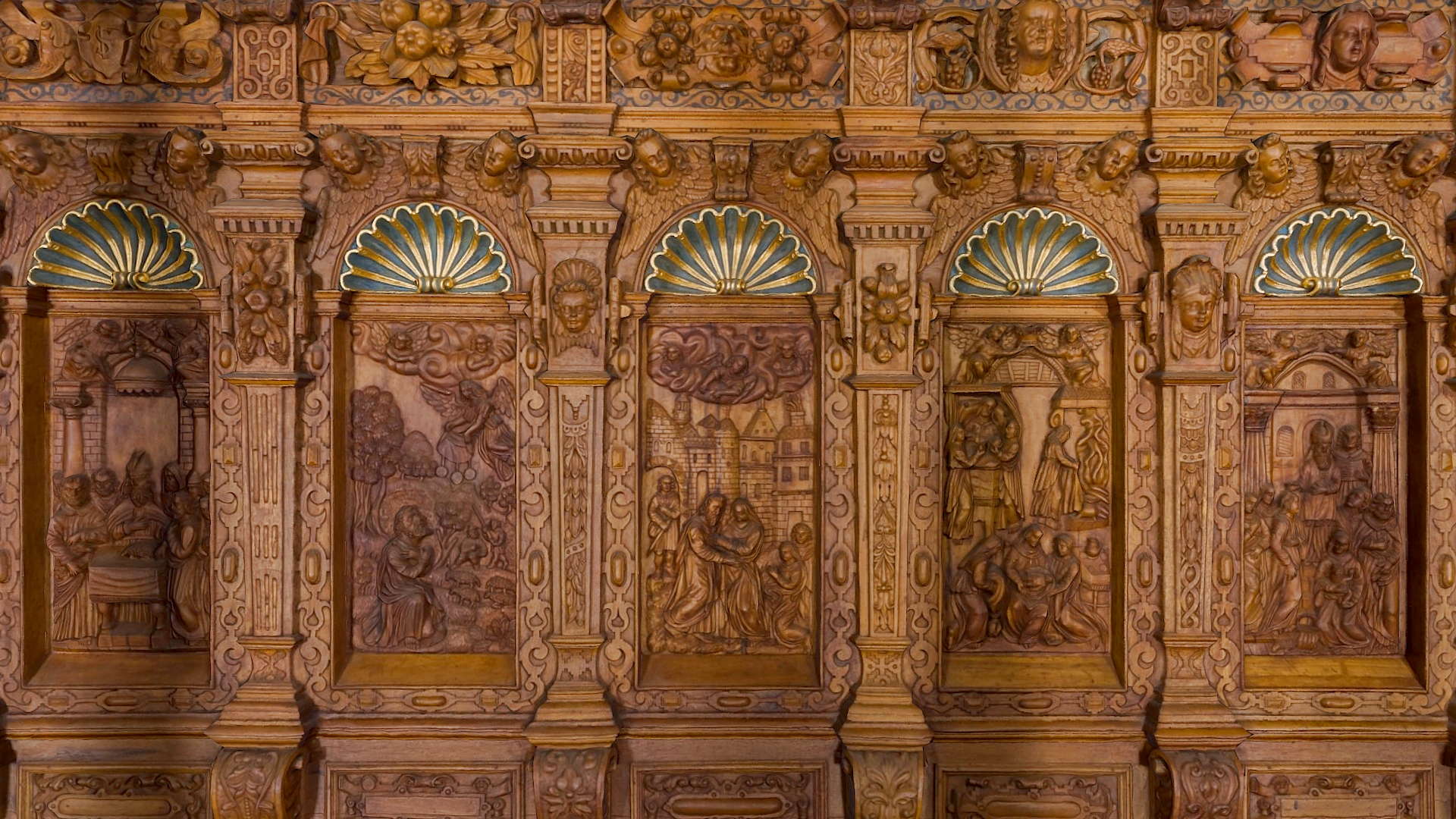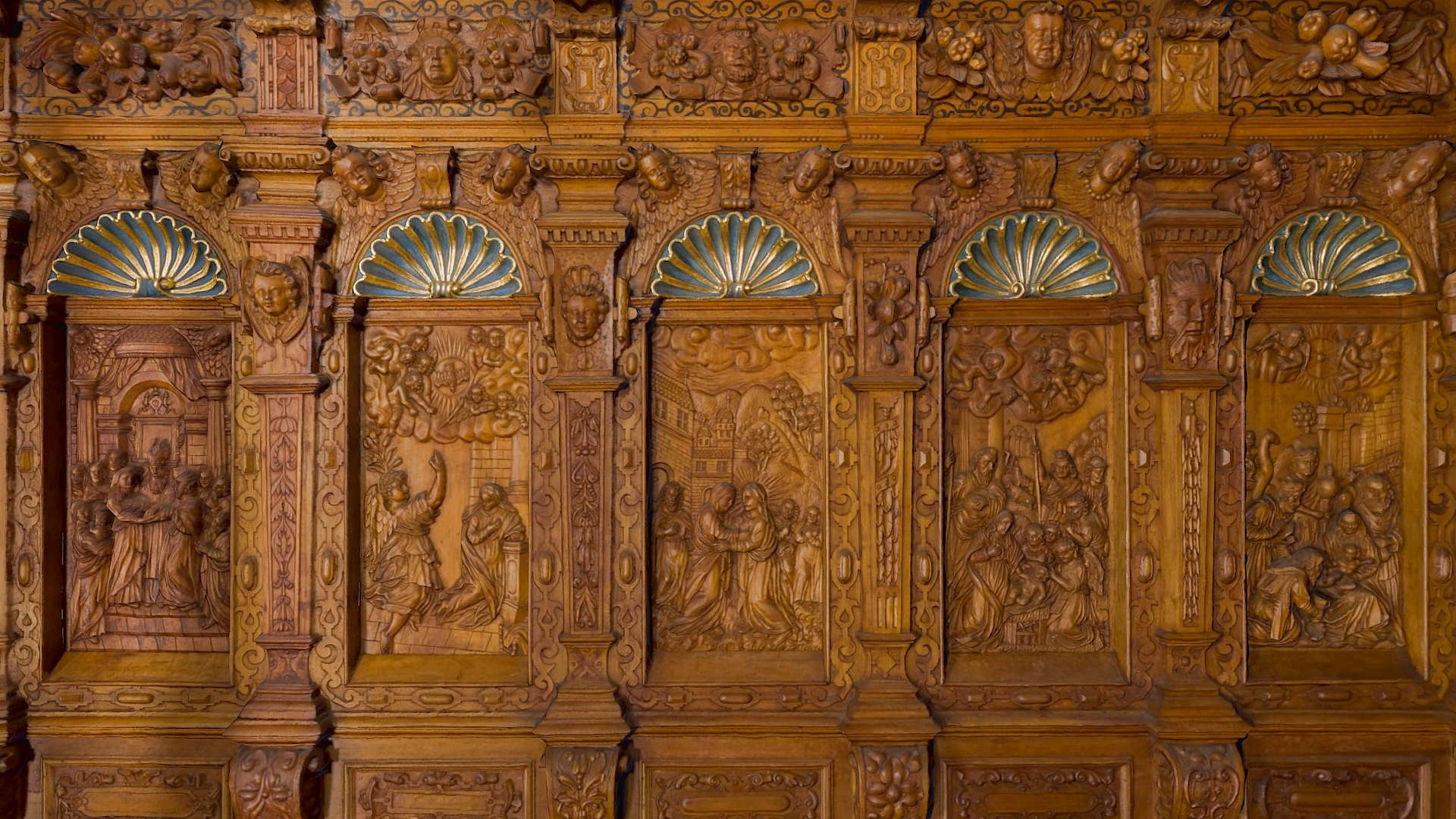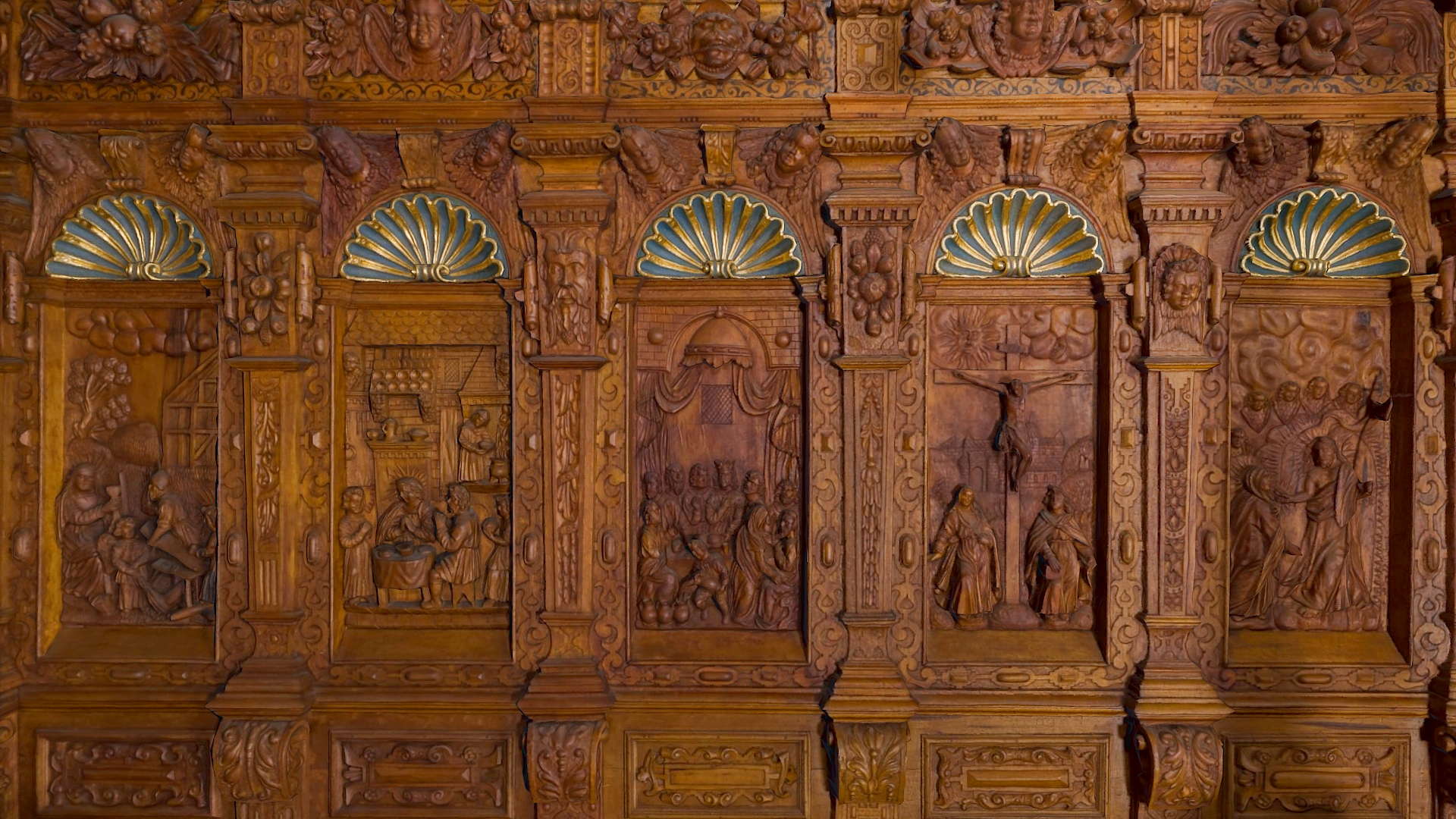The monastic choir, i.e. the former sacristy and infirmary
The space behind the main altar is occupied by the monastic choir. It was once part of the monastery building and was then incorporated into the church around the mid-17th century. Initially, it housed a sacristy and one of the most important rooms for the functioning of each congregation, i.e. the infirmary, or monastic hospital. We should mention here that, in one of the 17th-century works, the entire Kalwaria was compared to a kind of pharmacy containing priceless medicines.
And so, the guardian of Kalwaria, Fr Mikołaj of Skarbimierz, wrote: The Kalwaria area is like a pharmacy filled with the fragrance of the Passion of the Christ. Here you will see the various ingredients that belong and are given to you as a medicine, such as crosses, whips, brooms, thorns, nails, and other instruments. You will be filled with great fragrance when you are looking at the instruments gathered here. It is worth mentioning, according to the words of Jerzy Szablowski, that the hospital room was connected to the chancel by a window so that sick monks could participate in the services.
Eye-catching monastic stalls
In the monastic choir, we can easily notice stalls decorated with scenes from the life of the Blessed Virgin Mary. According to some researchers, they were made after 1632, but more recent studies suggest that the date of their creation should be moved back to the 1620s. Older literature on the subject believed that they were made by friars working under the direction of Fr Teofil Bereza. The monument was renovated at the turn of the 18th and 19th centuries by Brother Jan Tuliński. As mentioned by Jan Samek, an outstanding expert in the history of art, the decoration of the stalls is unique, as they are decorated with as many as 26 scenes from the life of the Virgin Mary. The uniqueness of the stalls is associated with the fact that they are among the oldest cultural items containing multi-figure scenes. As Elżbieta Pytlarz emphasizes in her study, the sculptors modelled the scenes adorning the stalls on the engravings of Hieronymus Wierix from the work of Hieronymus Natalis: Evangelice Historiae Imagines. The stalls are double-row, while the lower ones are placed directly on the floor, and the upper ones are accessed by two steps. It is precisely above the rear seats that the backrests, richly decorated with bas-reliefs showing Marian scenes, were placed. In small niches between the backrests, there are statues of St Francis and the Virgin Mary. As Elżbieta Pytlarz mentions, the arrangement of Marian scenes is chronological when looking from the altar towards the window; they are as follows: Rejection of Joachim’s Sacrifice, Annunciation to Joachim, Meeting at the Golden Gate, Nativity of Mary, Presentation of Mary, Marriage of the Virgin,
Annunciation, Visitation, Adoration of the Shepherds, Homage of the Magi, Circumcision of Jesus, Flight into Egypt, and Adoration of the Mother of God and Child by St Francis and the Franciscans. Another group situated from the window leading towards the altar shows the following scenes: The Mother of God Blessing St Francis, Return to Jerusalem, Jesus Teaches in the Temple, Holy Family at Work, The Meal of the Holy Family, Marriage at Cana, Crucifixion, Resurrected Christ Appearing to Mary, Risen Christ Appears to the Disciples, Dormition of the Mother of God, Funeral of the Virgin Mary, Assumption of Mary, and Coronation of the Virgin. It should be emphasized that this complex monument has been remodelled multiple times. In the light of the conservation works carried out in 2010, it was proven that the backs of the stalls were carved as a whole. The shape of the gallery was then transformed and trimmed; further decorations, such as the coats of arms of the founders, mascarons and angels, are younger. On the back of the backrests, apart from the date (1617 in Augusto), there were also other elements discovered: the names of Tomasz Barwinek Crac[oviensi], Sieciechowiensis, Tobias Pokorny, and Alensa Crac[oviensi], as well as Anno Domini 1696 die 22 Mai added in different handwriting. The state of preservation did not allow Elżbieta Pytlarz to fully identify the surnames and link them to a specific workshop in Kraków; they might have been monks, but probably not from Kalwaria itself, because their names cannot be found in the monastery chronicle.
The above-mentioned people were most probably contractors, and the date refers to the reconstruction of the temple at the time when the Czartoryski family took over the legacy of the Zebrzydowski family. Recent studies have proven the longer pedigree of the stalls, and they should be linked to the events of the choir reconstruction in 1624. They are probably even older, because in that year the stalls were arranged in a different manner. Elżbieta Pytlarz, when making a series of stylistic comparisons and analysing the relationship between iconographic representations and Pope Paul V granting an indulgence with the Splendor Paternae Gloriae bull (1612) for the faithful participating in the Passion service at Kalwaria stations, dates the stalls after 1612.
A careful analysis of the decorations allowed her to link the features of Northern Mannerism to the presence of Paulus Baudaert, who stayed in Kalwaria in the years 1605-1617, and to whom Mikołaj Zebrzydowski entrusted the task of implementing and supervising the construction of the original church. Perhaps Baudaert designed the backrests’ ornaments. Above the stalls, there is a gallery supported by 10 columns, decorated with a balustrade and wooden vases with flowers. There is also a beautifully decorated (inlaid) lectern with a box for the books necessary for prayer, situated in the middle of the choir. The stalls and the lectern also come from the 1630s. It should be mentioned that this space, which was the central sacred space in the temple, housed an underground tomb, where the mortal remains of the monks and, importantly, the benefactors of the monastery were deposited. It was practised until 1784.
Video:
Multisensory UNESCO 5 – Kalwaria Zebrzydowska – The monastic choir








